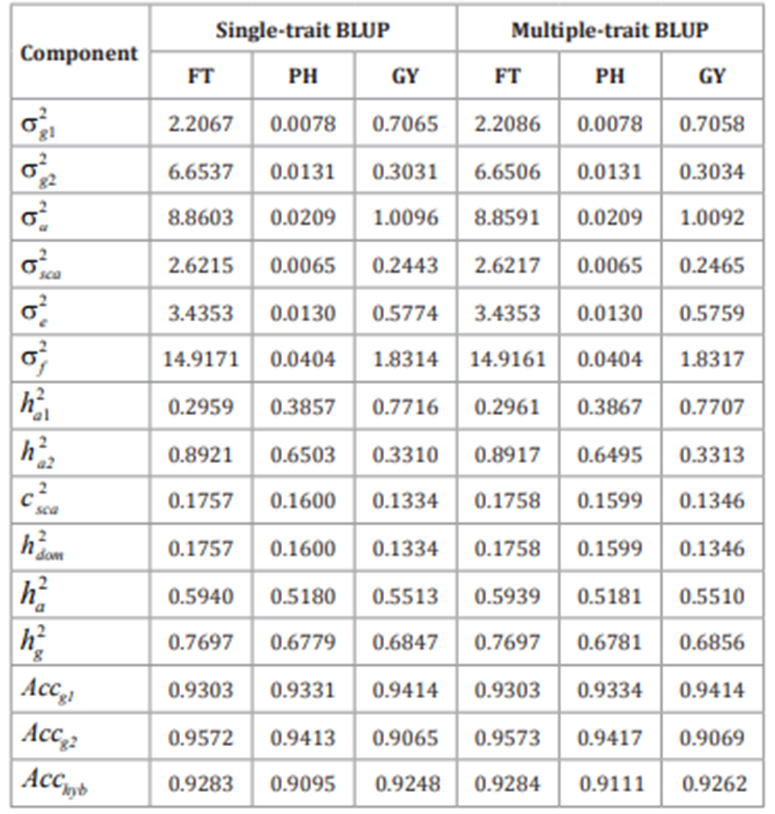Single- and multiple-trait BLUP in genetic selection of parents and hybrids of grain sorghum
Palabras clave:
plant breeding, partial diallel, mixed model methodology, genetic correlation, heterosisResumen
To increase yield, breeding programs must search for innovative and efficient methodologies for the development and selection of superior genotypes. Therefore, this study aimed to compare the single- and multiple-trait best linear unbiased prediction (BLUP) in genetic selection of parents and hybrids of grain sorghum. For this, an experiment conducted in alpha-lattice design with two replications was used. Flowering time (FT), plant height (PH), and grain yield (GY) were evaluated in 502 grain sorghum hybrids obtained by the cross of ten restorer lines and 54 male-sterile lines. Variance components were estimated via restricted maximum likelihood (REML). Significant effects of restorer lines, of male-sterile lines, and of specific combining ability were detected by the likelihood ratio test (LRT). The estimates of variance components, genetic parameters, and correlations were similar when obtained via single- and multiple trait- BLUP. Considering hybrids, the multiple-trait BLUP resulted in slightly higher predicted selection gain for the three evaluated traits and, therefore, can be efficiently applied in the genetic selection of grain sorghum.
Descargas

Descargas
Publicado
Cómo citar
Número
Sección
Licencia
Aquellos autores/as que tengan publicaciones con esta revista, aceptan las Políticas Editoriales.










.jpg)




